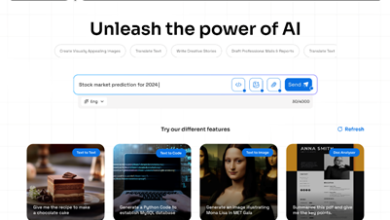How Generative AI can be turbocharged with knowledge graphs

It’s been in the public consciousness for little more than a year, yet generative artificial intelligence (Gen AI) is already being used by everyone from school students to chief executive officers.
Gen AI tools can undertake a multitude of tasks. They can generate computer code, create natural-language interfaces, and speed data retrieval from complex systems.
Tools such as ChatGPT and Google’s Gemini are being harnessed by non-technical users to summarise lengthy documents, draft marketing materials, and create everything from photo-realistic images to video footage.
The technology is also having an increasing impact when it comes to data and analytics. It can make dense, complex data sets more readily available to a wide groups of users.
The role of knowledge graphs
Increasingly, it’s becoming clear that the power of Gen AI tools can be further strengthened with the use of knowledge graphs.
Knowledge graphs can be likened to a giant digital encyclopedia. Unlike traditional encyclopedias, they don’t just list facts but also connect them. Concepts, entities (like people, places, or companies), and their relationships are all mapped out, allowing the Gen AI tool to understand the world in a more nuanced way.
Having this capability is vital when you consider that around 80% of the world’s data is unstructured. Being able to effectively make use of this digital treasure trove can deliver significant business value.
Adding value to data analysis
Knowledge graphs can add value to Gen AI in a variety of ways, and one of the most important is reducing the occurrence of so-called hallucinations. These occur when a Gen AI tool responds to a query with material that is factually inaccurate or even nonsensical.
To overcome this, knowledge graphs can provide a grounding in reality. They allow the AI tool to verify information and generate outputs that are consistent with real-world knowledge.
Knowledge graphs can also help to eliminate societal biases that can be produced by AI tools that have been trained on unfiltered data. The graphs can be curated to mitigate this by including diverse perspectives and factual information. This, in turn, helps to ensure that the AI’s outputs are fair and unbiased.
Also, knowledge graphs don’t just constrain, but can also help to spark creativity. By enabling Gen AI tools to better understand the relationships between different facts or concepts, they can explore new possibilities and generate more original and insightful content.
Interestingly, the benefits on offer extend beyond just improved outputs, as knowledge graphs can also streamline the development process. By providing a centralised source of information, they allow developers to train generative AI models faster and with less data.
Delivering business benefits
The mixing of Gen AI and knowledge graphs is already having a real-world impact for many organisations. For example, chatbots powered by gen AI and knowledge graphs are providing more natural and informative customer service experiences.
In the pharmaceutical sector, Gen AI tools can use knowledge graphs to analyse vast datasets of scientific research, accelerating the discovery of new drugs and treatments. They can achieve in days or even hours what would have taken a human research team many months.
Gen AI tools can also create marketing materials, product descriptions, and even financial reports. All outputs can be informed by the accuracy and context provided by knowledge graphs.
As Gen AI continues to evolve, knowledge graphs will become even more critical to those working in applications such as fraud detection, risk and compliance, identity and access management, network and IT operations. Not only will they reveal new ways to solve the world’s most pressing business problems, but by providing the foundation of factual knowledge and relationships, they will ensure that AI is not just powerful but also responsible and reliable.
The combination of knowledge graphs and gen AI holds immense potential to revolutionise a number of industries. By working together, these technologies can unlock a future of intelligent automation fuelled by creativity and grounded in factual accuracy.



